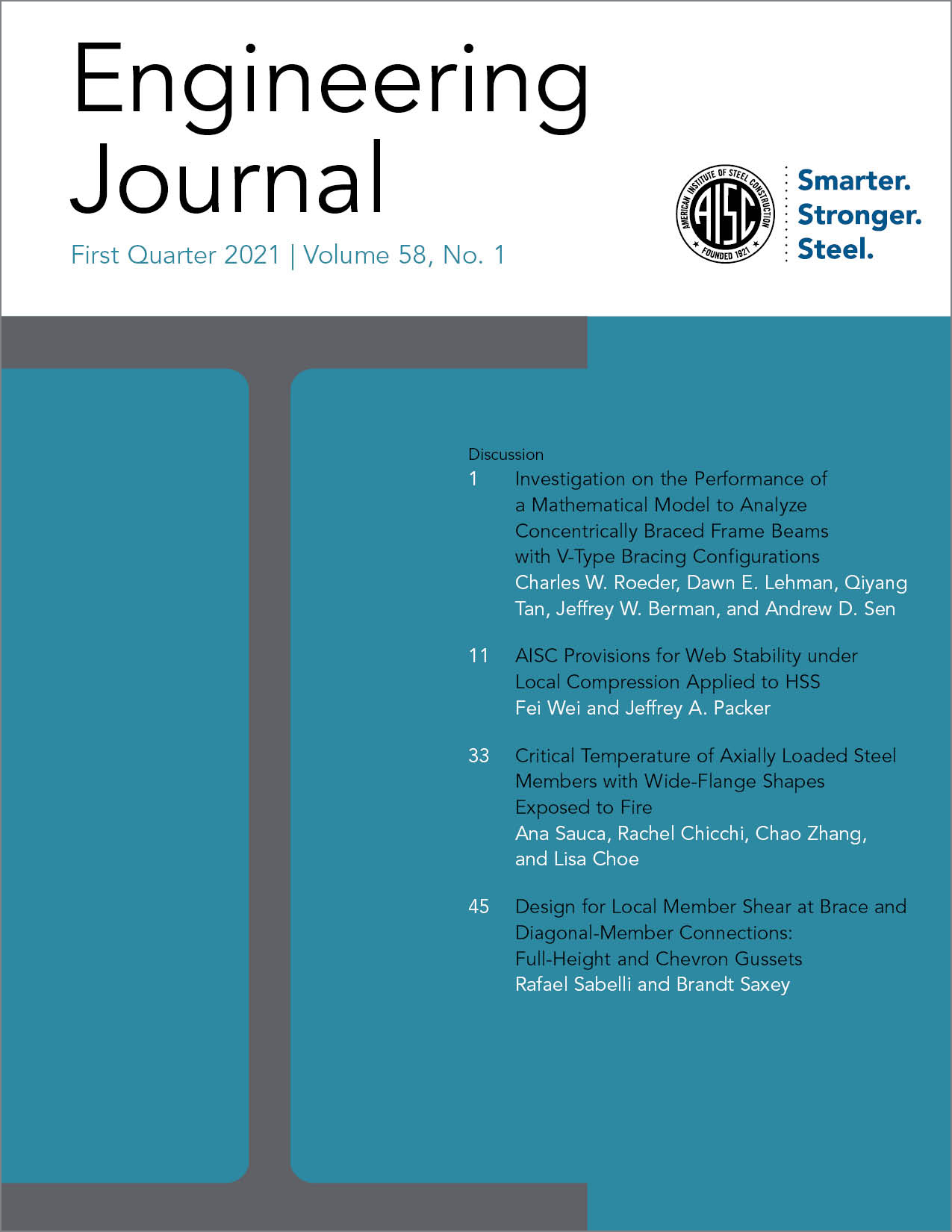Critical Temperature of Axially Loaded Steel Members with Wide-Flange Shapes Exposed to Fire
DOI:
https://doi.org/10.62913/engj.v58i1.1219Keywords:
critical temperature, structural steel, compression, tension, fireAbstract
This paper presents closed-form equations that were developed to evaluate critical temperatures of structural steel compression and tension members exposed to fire. The deterministic approach involved a parametric study using finite element simulations in order to identify influencing factors—for example, mechanical properties of steel, member slenderness, and axial load ratios. Statistical models were employed to develop closed-form equations representing the best fit of numerical results. A comparison with experimental column test data indicates that the proposed equation for compression members provides a conservative lower bound (16% lower on average) relative to the test data at load ratios greater than 0.3. A sensitivity study was also performed to further explore uncertainty in predicted critical temperatures due to variability of axial load ratios. For both compression and tension members, the ambient-temperature yield stress of steel, Fy, has a great impact on determination of axial load ratios, subsequently influencing the overall accuracy of the critical temperature estimated by the proposed equations. The applicability of the proposed equations is limited to wide-flange steel members that are simply supported, concentrically loaded, and exposed to uniform heating.

